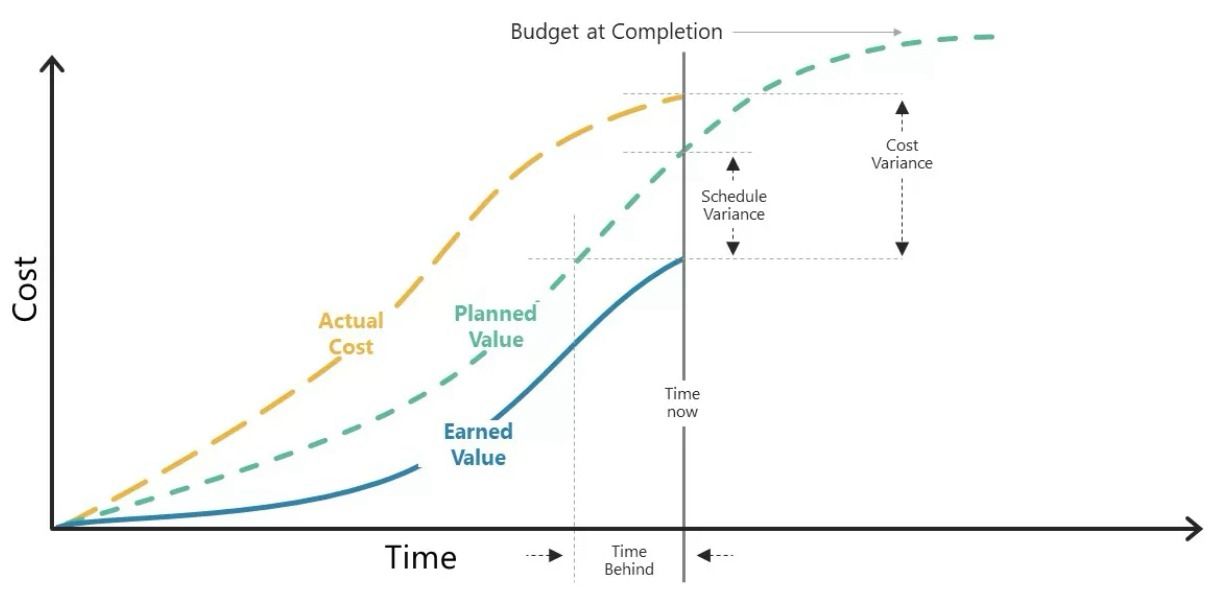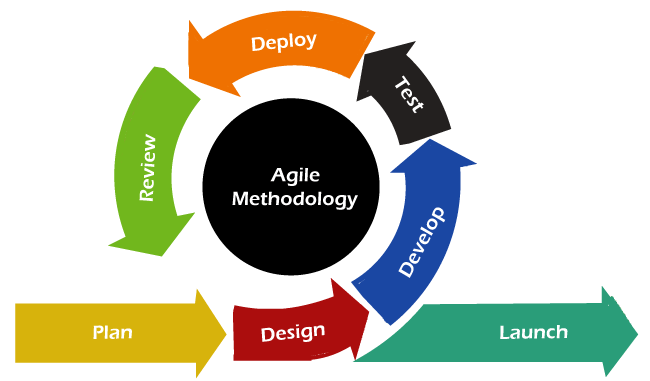Earned Value Management System
We use Earned Value Management System (EVMS) for tracking Schedule and Cost slippages in a Project, where requirements are well understood at the onset and design and architecture can be drafted in good detail.
Advantages of Earned Value Management System:
- A simple system for tracking Cost and Schedule slippages
- Easily monitor budgeted cost of work performed (Earned Value) vs actual cost of material and resources (T&M)
- Easily monitor under budgeting (slow execution) of high complexity and priority modules to keep the overall project on track

Agile Methodology: Sprint and Scrum
We use Sprint and Scrum based Agile Methodology when requirements are evolving and design and architecture may change significantly as new requirements get added. This setup is also ideally suited when a client is conceptualizing a Minimum Viable Product in the shortest possible time to test market response. In this system, requirements, design, cost, and schedule can change up to acceptable levels of variance.
Key Benefits:
- Adaptable to changing requirements and market conditions
- Fast delivery of Minimum Viable Product (MVP) for market testing
- Continuous feedback loop to refine and improve the product
- Flexible design and architecture adjustments as needed
- Improved team collaboration and communication
- Enhanced ability to manage risk and uncertainty
- Frequent reassessment and realignment of project goals
- Early and continuous delivery of valuable software
- Increased customer satisfaction through regular updates
- Effective management of project scope and changes

Risk Mitigation
Risk mitigation is a critical aspect of project management and organizational strategy.
Our Risk Mitigation Strategy
Risk Identification
We systematically identify potential risks through comprehensive analysis and stakeholder consultations to ensure that all possible risks are recognized early.
Risk Assessment
Our team evaluates the likelihood and potential impact of identified risks, prioritizing them based on their significance and potential disruption to the project or organization.
Mitigation Strategies
We develop and implement strategies to reduce or eliminate risks, including contingency planning, risk transfer, and risk acceptance based on the nature of the risk and its impact.
Monitoring and Review
Continuous monitoring of risk factors and periodic reviews ensure that our risk management strategies remain effective and are adjusted as necessary based on evolving conditions.
Communication
We maintain open lines of communication with stakeholders to keep them informed about risk status and mitigation efforts, ensuring transparency and collaborative problem-solving.
Documentation
Detailed documentation of risk management activities and decisions provides a reference for future projects and aids in understanding the risk landscape.